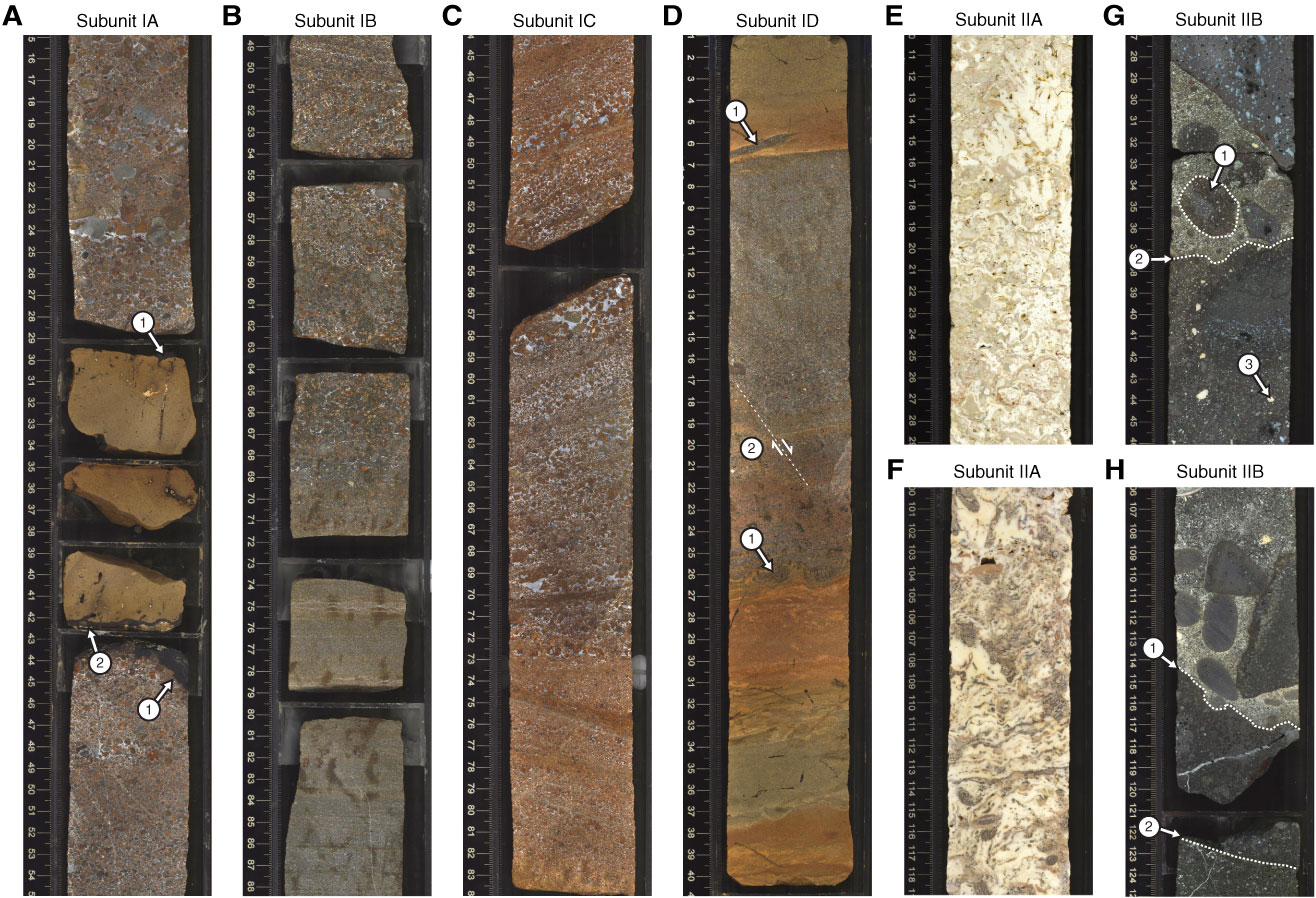
Figure F5. Close-up photographs of representative lithologies, Hole U1376A. A. Heterolithic layered multicolor basalt breccia (top and bottom) and heterolithic bioturbated volcanic sandstone (middle) in Subunit IA (interval 330-U1376A-1R-1A, 15–55 cm). Arrows show (1) ferromanganese crusts and (2) nannofossil foraminiferal chalk within a ferromanganese crust. This subunit likely consists of several hyperconcentrated flow deposits (layered breccia) and turbidites (bioturbated sandstones) emplaced in a pelagic or hemipelagic environment. B. Heterolithic layered multicolor volcanic breccia (top) and heterolithic laminated gray volcanic sandstone (bottom) in Subunit IB (interval 330-U1376A-1R-3A, 48.5–88.5 cm), interpreted to consist of hyperconcentrated flow deposits (layered breccia) and turbidites (laminated sandstones). C. Monolithic layered multicolor volcanic sandstone in Subunit IC (interval 330-U1376A-3R-1A, 44–84 cm), interpreted to represent hyperconcentrated flow deposits. D. Monolithic bioturbated brown coarse tuff (top and bottom) and heterolithic multicolor volcanic sandstone (center) in Subunit ID (interval 330-U1376A-3R-4A, 1–41 cm). Compaction features were observed, including (1) load casts and (2) a small synsedimentary fault. Subunit ID likely consists of turbidites and coarse tuff deposited in a hemipelagic or pelagic environment. E. Algal boundstone with branching growth form of alga in Subunit IIA (interval 330-U1376A-3R-5A, 10–29 cm), interpreted as an algal reef. F. Algal boundstone with encrusting growth form of alga and a few basalt grains in Subunit IIA (interval 330-U1376A-4R-3A, 100–119 cm). G. Basalt conglomerate with small shallow-marine bioclasts in Subunit IIB (interval 330-U1376A-5R-2A, 27–46 cm). Also shown are (1) a basalt sandstone clast, (2) an erosional surface, and (3) large algal fragments. This subunit is interpreted as shallow-marine sediment deposited on top of volcanic basement. H. Basalt conglomerate with shallow-marine bioclasts in Subunit IIB (interval 330-U1376A-5R-3A, 106–125 cm). Also shown are (1) an erosional contact in basalt conglomerate and (2) an erosional contact with underlying volcanic basement (Unit III).

Previous | Close | Next | Top of page